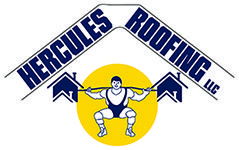A roof is a roof is a roof, right? Not quite. There’s a lot that goes into the shape and structure of a roof. Read on to find out more.
1. Flat Roof:
This is the simplest type of roof, and the most obvious. It’s easy to construct and turns the top of your house into a flat slab. The downside is because of its shape, debris like snow or leaves or water will inevitably settle on it, putting unnecessary strain on the roof through their weight and water content.
2. Shed Roof:
A flat roof tilted to one side, so it sits at a diagonal. Often the higher side of the roof butts up against the wall of a larger building.
3. Gable Roof:
This type of roof is distinguished by gables (a smaller roof that covers windows and doors) that jut out from the regular slope of the roof. In the modern age, gable roofs are extremely common, especially for suburban homes.
4. A-Frame Roof:
You’ve probably seen this kind of roof before on a church or picture of a cottage. It looks exactly like an A, with two steep sides that often touch the ground. It originated in cold climates where keeping snow from piling up was imperative. Here in South Florida, they’re unpopular because they offer a high surface area for hurricane winds to nab.
23 October 2024
Choosing the right roofing contractor in Florida is crucial for ensuring that your roofing project is completed effectively and safely. Here are some key factors to consider: 1. Licensing and Insurance State License: Ensure the contractor holds a val...
21 January 2020
Most people don’t think about the roof over their heads until a leak ruins their furniture, electronics, or another item. One sure way to know you need a roof replacement is if your roof is older than 20 years old. However, age isn’t the only d...
28 August 2019
Your roof is one of the first lines of defense in your home’s safety. Every day your roof protects against wind, rain, and heat. Over time, these elements can damage your roof and leave your home exposed. In most cases, your roof’s deteriorating cond...
01 August 2019
You have a roof over your head- now it’s time to keep it that way and prolong its lifespan! Taking care of your roof can be valuable in the long run in saving you time and money for replacing your roof. Here at Hercules Roofing, we want to help you w...
20 June 2019
At Hercules Roofing, we talk a lot about how it is important to regularly inspect your roof. Early detection of leaks can prevent headaches – literally. As water gets into your home, mold starts to grow which can cause a multitude of health problems,...
09 April 2019
As the old saying goes, “An ounce of prevention is worth a pound of cure.” That couldn’t be more accurate when it comes to your residential or commercial roof; maintenance is important. Replacing a ro...
07 March 2019
Proactive maintenance is the most efficient approach to make sure that commercial roofing stays safe and up to code. Avoid unnecessary problems caused by weather conditions or structural issues, both ...
08 May 2012
If you’re looking for a great way to increase natural light in your home while adding an interesting decorative element, consider installing skylights. With so many different factors to consider when ...
28 December 2018
Are you building your home from scratch? Maybe you’re thinking about replacing your current home’s roof? We know there are a few options to consider in the whole process… but we don’t want you to spen...
01 February 2019
Sometimes you get stuck replacing your roof suddenly after a hurricane or other natural disaster. Other times, your roof will just naturally reach the end of its lifespan. When that happens, it’s impo...









